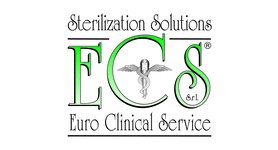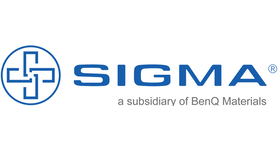Stability testing is an evaluation intended to demonstrate that the sterile barrier system maintains a sterile barrier over time. Stability has to be demonstrated with real-time ageing, but accelerated ageing is accepted as sufficient evidence for product commercialisation provided there is a program initiated in parallel to evaluate the packaging in real time studies.
Accelerated Ageing is an artificial procedure for establishing the lifespan or shelf life of a product in an expedited manner. Data obtained from the study is based on conditions that simulate the effects of ageing on the materials. A product can be released to market based upon successful Accelerated Ageing test results that simulates the period claimed for product expiration date (1 year, 2 years, etc). Accelerated Ageing data is recognised by regulatory bodies as a conservative estimate of the shelf life, but is only accepted until those tests can be repeated on “real time” aged samples.
Standards
The primary accelerated ageing standards pertaining to sterile barrier systems for medical devices are:
Calculation
Accelerated Ageing calculation is based on Arrhenius’ equation which simply states that a 10C increase in temperature doubles the rate of chemical reaction. Four variables are used in calculating the accelerated ageing test duration. A calculator is provided below to easily explore difference test scenarios.
- Test Temperature (°C)
- Ambient Temperature (°C)
- Q10 (Reaction Rate Factor)
- Real-time equivalent (Days)
Considerations
- Test Temperature is typically between 50 to 60C, most common 55°C
- Ambient storage temperature is typically between 22°C to 25°C. 22°C results in the shortest test duration.
- Conservative / common Q10 is 2 for medical devices.
- Relative Humidity (RH) is not a factor in the Arrhenius equation. However, RH should be kept under 20% so material is not damaged.
- The expiry date of a medical product is commonly based on its manufacture date. Therefore, some add an extra month to the ageing study to allow for sterilisation, etc. For example, a 12 month shelf life is simulated based on 13 months.
Real-Time Ageing programs provide the best data to determine shelf life and the effects of ageing on materials. The test is conducted by placing the test item on a shelf and allowing it to be exposed to typical storage conditions. Doing this will establish the items accurate expiration date. However this test is not feasible in today’s market conditions in which products become obsolete in a short time, and there is a need to shorten the product turnaround time. Time spent sitting on the shelf could prevent lifesaving devices from helping patients in need or it could render the device obsolete before it reaches the market.
To work around this, Real-Time Ageing is performed in conjunction with Accelerated Ageing tests. Accelerated Ageing is a testing method used to estimate the useful lifespan of a product when actual lifespan data is unavailable. This occurs with products that are relatively new and have not yet gone through their useful lifespan. A product can be released to market based upon results of successful Accelerated Ageing of the product/package.
(Accelerated ageing is conducted by simulating the period claimed for product expiration (1 year, 2 years, etc). Simulation is achieved by varying temperature and humidity levels and thus exposing the packaged device to conditions it is expected to survive during its shelf life. The identified expiration date through Accelerated Ageing is tentative until the results of Real-Time Ageing are obtained.
Accelerated ageing data is recognised by regulatory bodies as an acceptable means to generate data quickly, but this data is only accepted until those tests can be repeated on real-time product/package samples.)
There are numerous variables that medical packages and products will encounter when traveling from the point of manufacture to the sterilisation facility, distribution center, health care facility, etc. A medical package falling from a fork lift, swaying around a truck during transit, or being stacked on top of other packages / containers in a storage warehouse are all examples of distribution occurrences.
Distribution Simulation is a systematic and repetitious way of testing shipping containers, using testing equipment which exposes these packaging systems to genuine, real-life hazards that may ensue within the forthcoming distribution environment. Distribution Simulation is a large and quintessential component that complies with the ISO 11607 standard.
It may also be necessary to expose the medical packages and products to atmospheric conditioning in order to simulate particular field conditions that a packaged product or component may encounter during its expected life cycle or testing cycle. The ASTM D4332 standard covers this.
Distribution Simulation Testing Types
Drop
Used to determine the rugged nature of medical packages and the effectiveness of its interior cushioning ability when the products/packages systems are exposed to impact during material handling operations.
Vibration
Used to determine the ability of medical packages and products to withstand shock and vibration encountered during the entire transit course.
Compression
Used to determine the maximum compression resistance and long-term stacking strength of both individual medical packages and their master shipping containers.




































